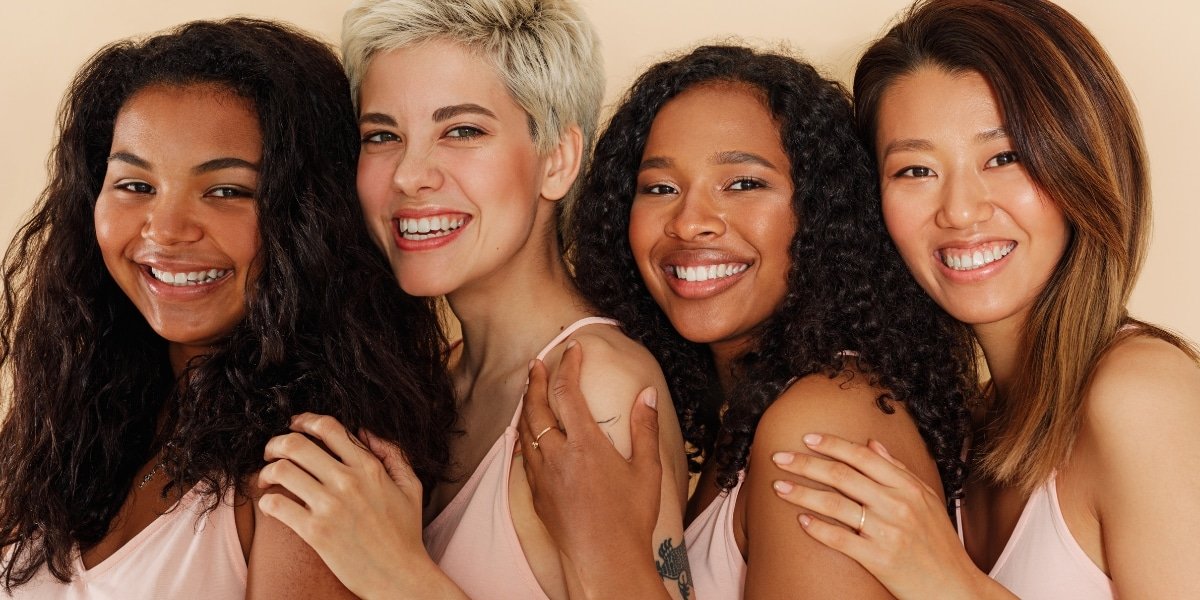Blog
Fitzpatrick Skin Types: How to Identify Yours

Your skin is unique, and understanding its characteristics can play a big role in how you protect and care for it. One way to gain deeper insights into your skin is by identifying your Fitzpatrick skin type. This classification system, developed by Dr. Thomas Fitzpatrick in 1975, helps to categorize skin types based on how they respond to UV exposure, making it easier to tailor skin care and sun protection routines.
But how do you know which Fitzpatrick skin type you belong to? In this article, we’ll dive into the Fitzpatrick skin types, how to identify yours, and why it matters for your skin health.
What Is the Fitzpatrick Skin Type?
The Fitzpatrick skin type meaning lies in its focus on categorizing skin based on how much melanin it has and how it reacts to the sun. Melanin is the pigment responsible for skin color, and it also helps protect the skin from the harmful effects of UV radiation. The Fitzpatrick scale ranges from Type I (very fair skin) to Type VI (very dark skin).
This system helps dermatologists and skincare experts assess skin risk and tailor treatments for everything from sun protection to laser treatments, ensuring the best results for different skin types.
The Fitzpatrick Skin Type Chart
To understand how to identify your Fitzpatrick skin type, let’s first take a look at the Fitzpatrick skin type chart. It divides skin into six main categories:
Fitzpatrick Skin Type I
- Skin Color: Very fair, pale skin that burns easily and rarely tans.
- Eye Color: Blue or green eyes.
- Hair Color: Light blonde or red hair.
- Sun Reaction: Always burns, never tans.
- Risk Level: Very high risk of sunburn and skin damage.
Fitzpatrick Skin Type II
- Skin Color: Fair skin that burns easily but may tan slightly after repeated sun exposure.
- Eye Color: Blue, green, or hazel eyes.
- Hair Color: Blonde or light brown hair.
- Sun Reaction: Burns easily, tans minimally.
- Risk Level: High risk of sunburn.
Fitzpatrick Skin Type III
- Skin Color: Medium skin tone that burns minimally and tans moderately.
- Eye Color: Brown or hazel eyes.
- Hair Color: Brown hair.
- Sun Reaction: Sometimes burns, tans moderately.
- Risk Level: Moderate risk of sunburn.
Fitzpatrick Skin Type IV
- Skin Color: Olive or light brown skin that tans easily and rarely burns.
- Eye Color: Brown eyes.
- Hair Color: Dark brown or black hair.
- Sun Reaction: Rarely burns, tans easily.
- Risk Level: Lower risk of sunburn.
Fitzpatrick Skin Type V
- Skin Color: Dark brown skin that is resistant to sunburn and tans very easily.
- Eye Color: Dark brown eyes.
- Hair Color: Dark brown or black hair.
- Sun Reaction: Very rarely burns, tans easily.
- Risk Level: Low risk of sunburn.
Fitzpatrick Skin Type VI
- Skin Color: Very dark brown or black skin that rarely burns.
- Eye Color: Dark brown eyes.
- Hair Color: Black hair.
- Sun Reaction: Never burns, always tans.
- Risk Level: Very low risk of sunburn.
Understanding where your skin fits into this chart is crucial for determining the best sun protection, skincare, and potential risks associated with UV exposure.
How to Identify Your Fitzpatrick Skin Type
Identifying your Fitzpatrick skin type can be easy if you consider the following factors: how your skin reacts to the sun, your natural skin color, eye color, and hair color. Here’s how you can figure out your skin type:
Step 1: Examine Your Natural Skin Tone
Does your skin appear very fair or dark? Determine if your skin is very light, medium, or dark by looking at your natural skin color, not how it looks when tanned. People with Fitzpatrick skin type I have pale skin that burns easily, while those with type VI have dark brown or black skin.
Step 2: Understand Your Sun Response
Think about how your skin reacts to the sun. Do you burn easily, or do you tan effortlessly? The more you burn without tanning, the higher the Fitzpatrick skin type number. People with skin type II burn easily but may tan slightly, while skin type IV rarely burns and tans easily.
Step 3: Check Your Eye and Hair Color
This is an additional way to narrow down your skin type. People with lighter hair (blonde or red) and light eyes (blue or green) are more likely to be in types I and II, while those with darker hair and eyes fall into types IV-VI.
Step 4: Use a Fitzpatrick Skin Type Quiz
To simplify the process, you can take a Fitzpatrick skin type quiz online. These quizzes ask a series of questions about your skin’s reaction to the sun, color, and your tendency to burn or tan. Based on your answers, the quiz will recommend your skin type. This tool is great for helping you identify your type quickly and accurately.
Step 5: Use a Fitzpatrick Skin Type Calculator
A Fitzpatrick skin type calculator can also help you determine your skin type by inputting your responses to specific questions. It’s a quick and easy method to understand which Fitzpatrick skin type you fall under based on scientific formulas and skin observations.
Fitzpatrick Skin Type and Its Significance
Identifying your Fitzpatrick skin type is more than just a classification—it plays a significant role in skin health and beauty. Here’s why:
1. Sun Protection
Your Fitzpatrick skin type directly impacts your skin’s need for sun protection. For example, if you fall under skin type I or II, you have a higher risk of sunburn and should opt for a broad-spectrum sunscreen with a higher SPF (50+). On the other hand, skin types IV and V may have more natural protection and may not need as high of an SPF.
2. Skincare Regimen
Understanding your skin type can help tailor your skincare routine. For example, people with Fitzpatrick skin type I often need products to soothe sunburns, while those with type IV may require moisturizers that target hyperpigmentation or uneven skin tone.
3. Laser and Cosmetic Treatments
Different skin types react differently to cosmetic treatments. Fitzpatrick skin type Asian (often falling under types III and IV) may have a different reaction to certain lasers or chemical peels than someone with skin type I. Dermatologists use the Fitzpatrick scale to avoid treatments that could cause hyperpigmentation or scarring.
4. Risk of Skin Cancer
The Fitzpatrick scale also helps assess the risk of developing skin cancer. Fairer skin types (I and II) are more susceptible to UV damage and skin cancer, whereas darker skin types (V and VI) tend to have a lower risk but are still susceptible to certain types of skin cancer, especially in areas that aren’t regularly exposed to the sun.
FAQ: Fitzpatrick Skin Types
Conclusion
Understanding your Fitzpatrick skin type is essential for taking proper care of your skin. By identifying which skin type you fall under, you can better protect your skin from harmful UV rays, choose the right skincare products, and reduce your risk of skin issues such as premature aging or skin cancer.
Whether you use a Fitzpatrick skin type quiz, check the Fitzpatrick skin type chart, or rely on a Fitzpatrick skin type calculator, knowing your skin type empowers you to make more informed decisions for your skin health. Remember to always wear sunscreen and follow a skincare routine that caters to your specific needs!

